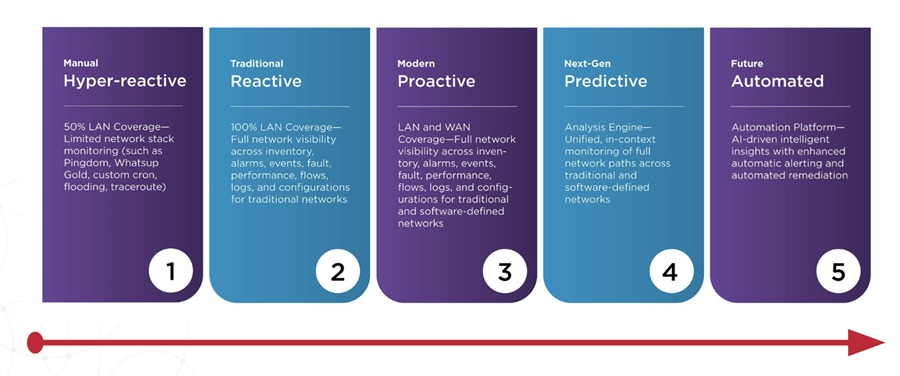Last month I introduced some recent — and I believe highly significant — research into the area of what EMA calls "Advanced Operations Analytics" or AOA. In that blog, I defined AOA as "big data for IT" and went on to explain how it transcends operations to include all of IT as well as some business constituents. In parallel, AOA also supports many multiple use cases.
Now I’d like to share some of the "use case" insights and perspectives we learned from the research.
Probably the first thing to say is that people don’t deploy AOA to do just one thing. That’s something for a monitoring tool or some other more traditional investment to do.
Our use-case picture for AOA has multiple dimensions. For instance when asked about benefits such as ...
■ Faster time to repair problems
■ Better optimization of IT assets
■ Gaining real-time and historical trends on IT services
■ Faster time to deliver IT services
■ Faster identification of advanced threats and internal security threats
■ More efficient use of infrastructure capacity
■ Superior financial planning for IT as a business
... the average respondent checked five. In other words, the average respondent wanted five benefits of the kinds indicated above from his or her AOA investment. And in fact some respondents checked as many as ten and even thirteen.
We also looked at DevOps and cloud. Nearly two-thirds (65%) of respondents, planned to support DevOps requirements through AOA. This was predominantly through either direct support for the application development process, or for minimizing the time developers would have to spend troubleshooting production problems. Other areas of interest included providing feedback to development from production issues, and supporting more effective hand-offs between development and operations.
When it came to cloud — the data showed that those who viewed themselves as "extremely successful" in AOA were 20 times more likely to be "very successful" in their hybrid cloud adoptions — than those who were only moderately or less successful in AOA. That’s not a typo — it’s twenty times! This is data speaking, not a holy writ, so it should be taken, like all data, with an appropriate grain of salt. But there are lots of good reasons — just given some of the use cases examined above — why this might be so.
Cloud priorities included security and real-time service performance as the not surprising leads, but coordinated business impact, financial optimization and capacity optimization were also strong.
Another way to look at use case is to ask WHO should be supported by the AOA investment.
The top five domain roles our respondents wanted to support with AOA were:
1. Security
2. Network
3. Database
4. Application development (two percentage points ahead of application management)
5. Storage
The top cross-domain roles for AOA were:
1. Service delivery (application services across the infrastructure)
2. Capacity planning
3. Infrastructure planning
4. Configuration management
5. Change management
And the top non-IT roles for AOA were:
1. Business development and planning
2. Line of business
3. On-line operations
4. User experience management
5. Supply chain management
When we did the numbers, we saw that the average respondent had indicated 4 domain-specific roles, 3 cross-domain roles and 2 non-IT roles. That’s a total of nine roles for an AOA investment — once again proof of what we might call "use case diversity."
In yet another look at the many faces of AOA deployments, we channeled the data to see how one skill set might differ from another in priorities. The results below are focused on just that — how each group contrasts with the other groups, as opposed to a total assessment of each group in and of itself.
■ Security: Consistently prioritizes security values, favors predictive trending, events and time series data, values real-time insights and historical trends on IT services.
■ ITSM/service desk: Favors reports on asset and financial optimization, and better alignment of IT service and business performance.
■ Software development: Prioritizes systems availability and performance, if/then change impact, log files, integrations with DevOps tools and application dependency mapping for performance.
■ Application management: Prioritizes application optimization, problem isolation in systems, business events and time series data, app performance, event management and operational dashboard integrations, and ADDM for performance.
■ Change and configuration management: Prioritizes configuration and change management effectiveness, isolating problems in provisioning applications, if/then change impact analytics, capacity planning analytics, and CMDB/CMS /ADDM linkages.
■ IT asset and financial optimization: Prioritizes business activity metrics, CapEx savings, OpEx savings, application usage for cost, business process impacts and supply-chain related outcomes, and CMDB/CMS and financial planning integrations.
Hopefully this gives you some sense of "AOA diversity" or as we like to say: The Many Faces of Advanced Operations Analytics. Speaking of the latter — the full report with far more context, insight and data can be found on the EMA website.


